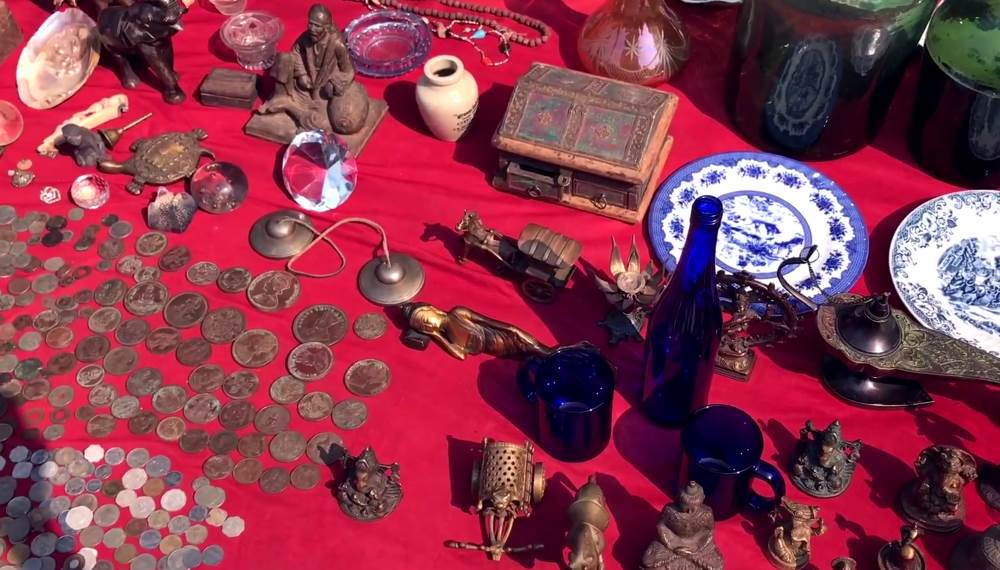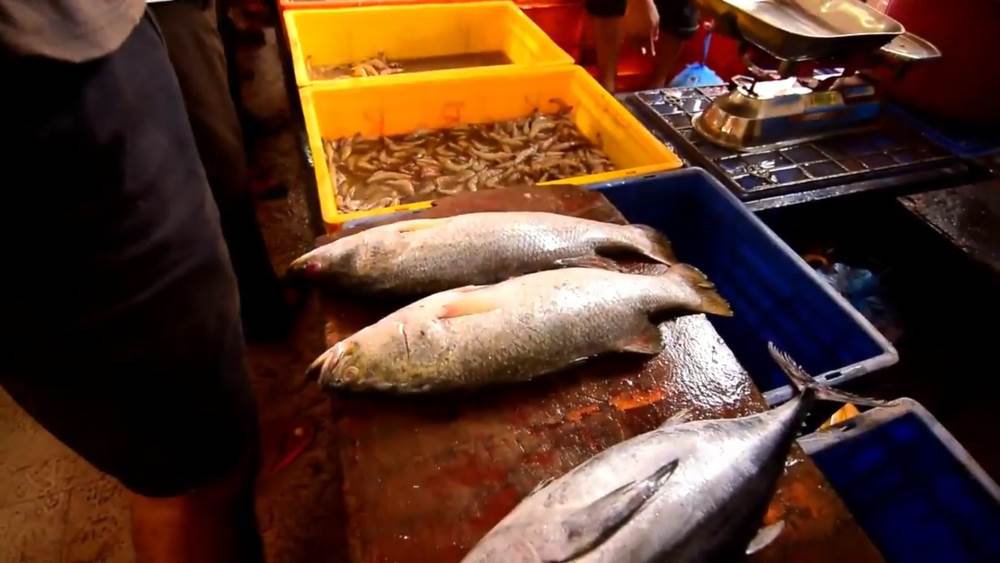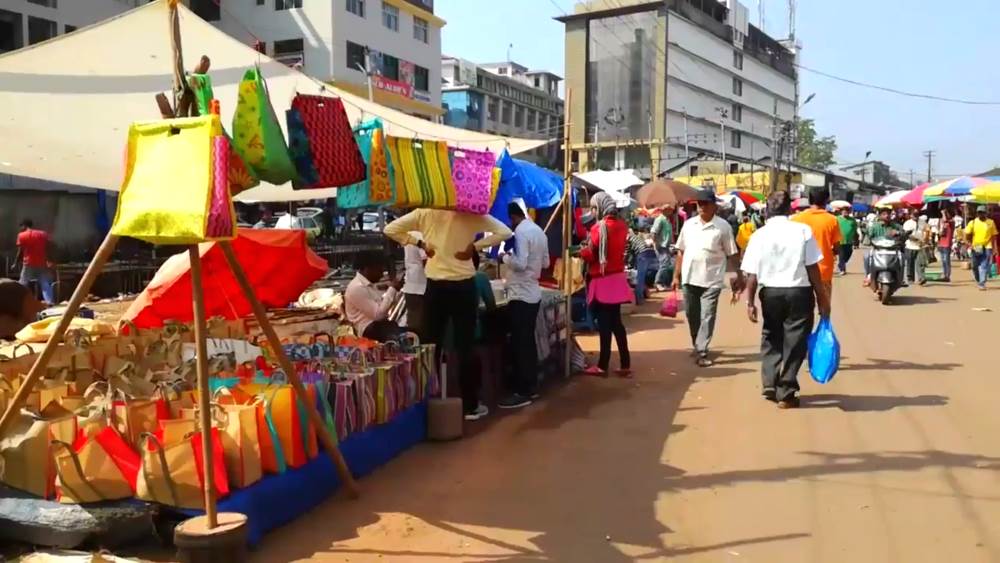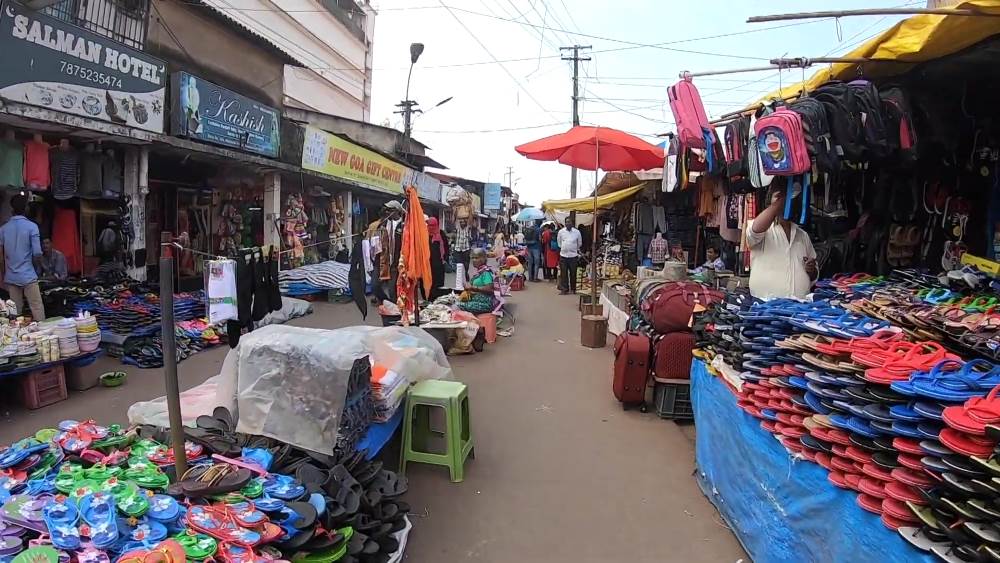There are several major cities in the north of India’s smallest state, but only one has a market listed as a major attraction. We are talking about Mapusa in Goa. Forever noisy and vibrant, he works seven days a week. Trade peaks on Friday, when local farmers gather with their goods. It is on this day that those who hit the shopping area are in for an unforgettable experience.
The layout of the market in Mapusa
Irregular rectangle of the market square is divided into two parts. A separate building with a modern design was built for fish and meat. Compared with the many colors of open aisles, it looks austere and dull, but it manages to comply with the minimum sanitary standards. The rest, a very impressive part, is given for fruits, vegetables, clothes, dishes, jewelry and other types of goods. According to the law of commerce, the closer the counter to the entrance, the more expensive the goods on it.
You should not buy things or products right away, you need to walk around the market and price those samples that are in the back. They can cost many times cheaper, and even in this case, you need to haggle, respecting tradition.
The most expensive types of goods, such as jewelry, shoes and clothing, are on the perimeter of the retail area. The rest are divided into segments, where only one direction is represented. Never mix vegetables with perfumes and spices with sweets. Once you have walked around the market and understood the principle of the location, then you can safely plan your purchases, exactly going to the right part of the market.
Vegetable rows

The market has the lowest prices for vegetables, and in the process of haggling it can be reduced even further. Huge competition and an abundance of goods do not leave traders a chance. The buyer need only be careful not to shove stale goods and gamble, leaving the counter and coming back again.
For the sake of fairness, it should be noted that vegetables are cheap everywhere. So it makes no sense to go to the market just for them.
Fruit
Many tourists go to the fruit rows as if they were a museum. You can’t find such exotics anywhere else, and if you get in season, mangoes or papayas will cost the same as vegetables.
Also on the counters, in the pavilions, and even just on the ground on a bedded cardboard or oilcloth are sold:
- mangosteen;
- jackfruit;
- rambutan;
- pomelo;
- sapodilla;
- tamarind;
- pineapple.
In spring, you can take a risk and try the most controversial fruit of the tropics – durian. Because of its strong, specific smell, it is not allowed to be transported in vehicles or carried in public places. They won’t let you on the plane with fresh fruit, either. This is a case where the external comes into conflict with the internal. Those who were not afraid of the disgusting smell and decided to try it on taste, waiting for a feast of sensations, where the creamy cream mixed with a touch of nuts with a subtle hint of strawberries and peach.
In order to eat them, there are special open places, like street cafes. In front of the customer the fruit is neatly cut, arranged on a plate and given a fork on a long handle. The smell on your hands or clothes is not removed by the strongest modern cleansers.
Decorations

Fashionistas can safely leave at these counters in the morning and pick them up by evening, they’re not going anywhere. The famous Indian necklaces, earrings, multi-layered bracelets made of faceted precious, semi-precious and semi-precious stones catch the eye at first sight. And the prices here are not at all European, you can buy everything and a lot. Look for these pavilions along the perimeter of the market, given that they open a little later than the fish or vegetable stalls.
Flowers
For them, too, has been allocated its own segment. Flowers have a sacred meaning in India, fresh garlands are used as amulets, composed according to certain rules. In order not to get into trouble, it is not recommended to buy something without the guide’s prompting. But wandering through the fragrant rows and marveling at the bounty of tropical nature is definitely worth it.
Pharmacy and Ayurveda
There are no separate pavilions for Ayurveda products, some species from this section can be found in the pharmacies on the outside of the market. Multi-component massage and aromatic oils, incense sticks, and incense balls are especially prized. Interesting herbal gatherings, preparations based on ginseng. It is not profitable to go especially for drugs. For many of them prices are fixed throughout the country.
Fish and seafood

Knowing how the Mapusa market in Goa works, you can be in time in the morning for the very arrival of the gifts of the sea. To do this, you must arrive in the morning, after 8 o’clock in the morning. The pavilion is on the far side, from the bus stop you have to walk almost all the way through the market.
It is worth taking into account that by lunch time the goods are sold out completely.
The starting price starts at 450 rupees and varies depending on the season and the amount of catch. There are tiny octopuses, cuttlefish, shrimp of all sizes and suits, mussels and even sharks. For those who prefer a semi-cooked product, the yard is staffed by professionals who cut fish and exotic sea creatures at breakneck speed.
Spices and Tea

The best souvenir brought from Goa is a set of spices in a gift box. Various condiments are sold in small packages and huge open bags.
Offered:
- turmeric;
- ginger;
- coriander;
- cumin;
- carnation;
- cardamom;
- cinnamon;
- Badian;
- tamarind;
- saffron;
- nutmeg.
The assortment is impressive, but if you are not experienced in choosing spices and teas, it is better to just admire the stalls and avoid shopping. Some varieties sold by weight are of very low quality and only a professional chef or taster can distinguish them from the good ones.
Perfumes and Incense

There is no need to look for these products on the shelves. They’re not there. All the highest quality fragrances, exquisite incenses, fragrance sticks and blends await customers at the RamKrishna pavilion at the market entrance. The prices are high, but the quality corresponds to them. The consumption is very economical, so the purchase will be profitable.
Market hours in Mapusa
The schedule and the actual start of trading in India exist separately. Officially, work starts at 8 a.m. and lasts 12 hours. But the main products do not take their place on the trays and counters until 9.
In the afternoon, from 1 to 3 p.m., the bazaar begins its nap time, literally. Merchants close the pavilions and go to sleep right outside or under a comfortable shelter. For this time life comes to a standstill.
How to get to the market in Mapusa
It is most convenient to go shopping by bus. They go frequently, there are several routes, and the stop is not far from the entrance to the market. An alternative is a cab, but such a train will turn out to be overhead. Riding in a rental car is not recommended. There are no free parking spaces for several blocks around, especially on Fridays and weekends.
The market in Mapusa is marked on all tourist maps, so it is easy to navigate, next to the options for travel to it.
Market on a map of Goa
Preparing for the trip, it is worth bearing in mind that the list of products on the market corresponds to the daily needs of city residents, frankly souvenir products no. Shopping will be practical and keep the experience of visiting one of Goa’s main markets vivid.
